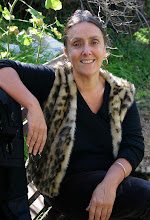Much of my writing explores the imbalance between masculine (Sky God) and
feminine (Earth Goddess) principles, as in the takeover of the old religion in ancient
Sumer that forms the basis of DAUGHTERS OF TIME, and the deadly struggle between
the Wardens of the Land and the Archpriests of the One God in THE ELEMENT SERIES. This is also the focus of my non-fiction book, DON'T TAKE IT LYING DOWN: LIFE ACCORDING TO THE GODDESS.
Here are some thoughts about the feminine principle . . .
The feminine principle
or archetype has been present in all cultures across time -- in images, myths,
songs, and fairytales. In the
modern world, however, we can easily lose touch with the mythical and magical realms
of the Goddesses. We find ourselves looking to Hollywood and women’s magazines, where
women all too often embody a strange mix of Aphrodite and the eternal girl.
In fairytale and
myth, we find the princess, the queen, the wicked stepmother, the witch, the
warrior, the fairy godmother, and other significant feminine archetypes. A Goddess is a
particular form of the feminine archetype. The Goddesses of ancient Greece, for
example, come to us as images and stories of the feminine principle. In their book, THE GODDESS WITHIN, Woolger and Woolger said that:
all creative and inspirational thinking, all nurturing, mothering, and gestating, all passion, desire, and sexuality, all urges towards connectedness, social cohesion, union, communion, all merging and fusion as well as impulses to absorb, to destroy, to reproduce, and to replicate belong to the universal archetype of the feminine (p.10).
The most familiar Olympian Goddesses were Hestia,
Demeter, Hera, Artemis, Athena, Aphrodite, and Persephone. Jean Shinoda Bolen (GODDESSES IN EVERYWOMAN) divides these
Goddesses into three groups:
- the virgin Goddesses (Athena, Artemis, Hestia),
- the vulnerable Goddesses (Hera, Demeter, Persephone), and
- the alchemical or transformative Goddess (Aphrodite).
The virgin
Goddesses represent the independent, self-efficient quality in women. Emotional
attachments do not divert these Goddesses from what they consider important.
They value autonomy and actively seek their own goals. This aspect can be seen
in characters like Suzanne Collins’ Katniss Everdeen from THE HUNGER GAMES TRILOGY: woman as warrior. We also
saw this in the movie, ALIENS, when Ripley confronts the alien queen and says, “Get
away from her, you bitch!”
The vulnerable Goddesses
represent the traditional roles of wife, mother, and daughter. They are
relationship-oriented archetypes and express the need for affiliation and
bonding. The vulnerability appears in their stories as rape, abduction,
domination, and humiliation by male Gods. See the 1998 film by Boaz Yakin, A PRICE ABOVE RUBIES.
Aphrodite is
called the alchemical Goddess due to her capacity for autonomy, relatedness,
creativity and change. This is the archetype represented in the 1998 Marshall Herskovitz
film, A DESTINY OF HER OWN (DANGEROUS BEAUTY), a dramatisation of the life of
Venetian courtesan, poet, and writer, Veronica
Franco (1546–1591).
In ancient times, a woman might
spend time in the temples of all the goddesses over a lifetime, moving freely
through the stages of her development as she engaged the archetypal energies. Today we have lost much of that
access to the archetypal feminine. The historical transition from matrifocal to patriarchal societies involved
a shift of power from feminine principles to masculine. Cultural historian,
William Irwin Thompson, has said that the
. . . effort to displace the female seems to be the archetypal foundation for civilisation, for mankind has been at it ever since; whether he is challenging mother nature in flying away from her in rockets, or in challenging her on earth through genetic engineering, man has not given up the attempt to take away the mystery of life from the Great Mother and the conservative feminine religion (THE TIME FALLING BODIES TAKE TO LIGHT, 1981).
This struggle between the masculine
and feminine principles is the subject of many stories, although often we just find stereotyped
tales of “the homicidal bitchin' that goes down in every kitchen . . ." (Leonard Cohen, DEMOCRACY). But there are also books and films that explore the bigger picture
of this struggle between the ‘Sky God’ and
‘Earth Goddess’ principles (even if that’s not explicit in the story). For example :
Marion Zimmer
Bradley (1983): THE MISTS OF AVALON explores the takeover of the older Druidic
religion of Great Britain at the advent of Christianity.
Sherri S. Tepper
(1998): THE FAMILY TREE is a powerful exploration of ethical,
environmental, social and metaphysical issues as Nature fights back against modern-day over-development and undervaluing of the fertile Earth.
James Cameron (2009): AVATAR follows Jake Sully's struggle to protect the natural world and people of Pandora from corporate greed and military might.






